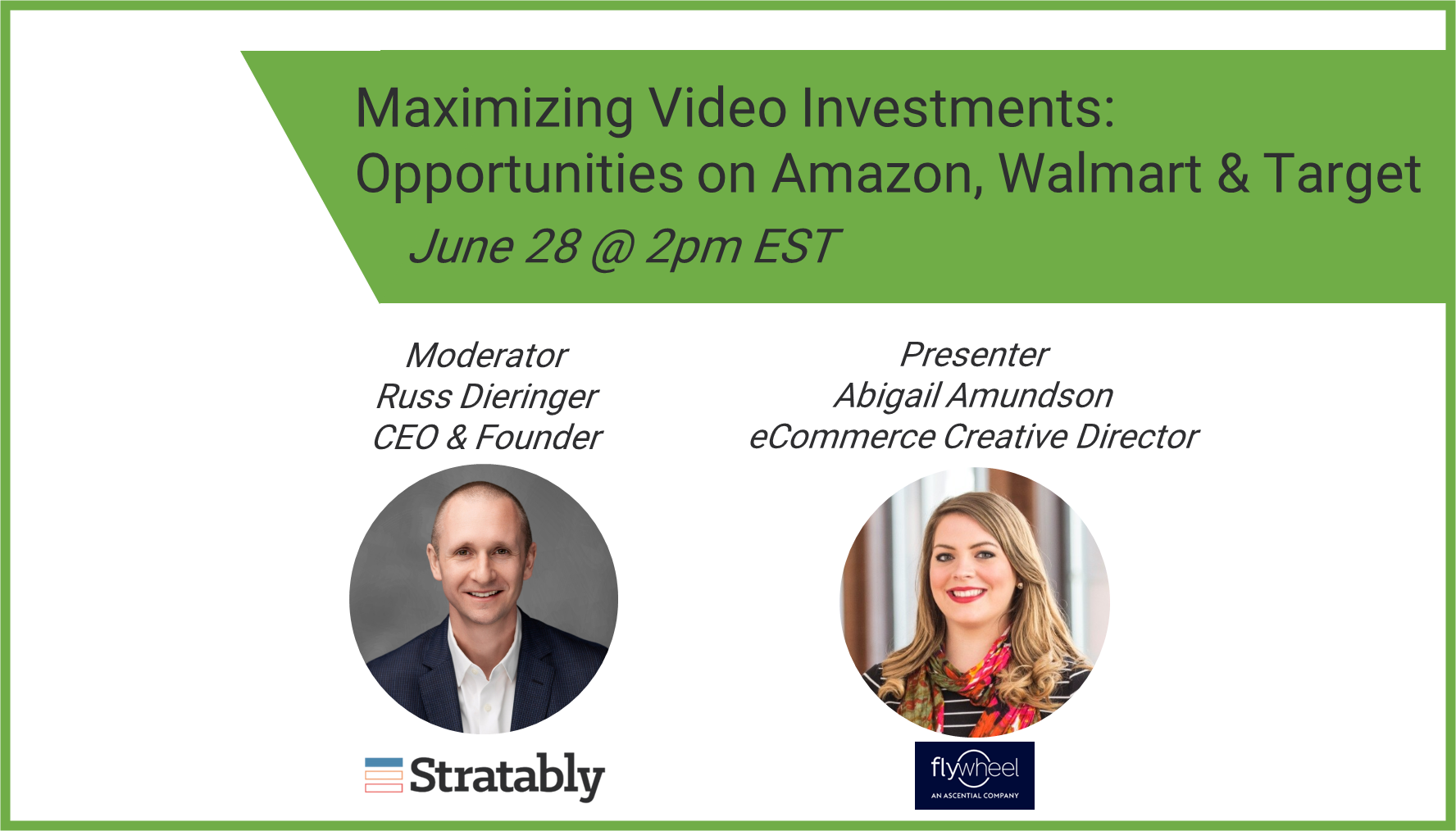June 28, 2023
Stratably hosted Abigail Amundson from Flywheel Content Studio to walk through video strategies and tactics that can be applied to Amazon, Walmart and Target.
Key recommendations included:
- Match video content to the consumer journey
- Address purchase barriers
- eCommerce videos don't need to be heavily produced
Watch The Recording Here
Here’s what we found most interesting:
- General video specs: Focus on videos that can be engaging and informative with sound off, and ensure a mobile first approach. Sub-10 second videos can be useful for Sponsored Brand Videos, while on a PDP, a 10-30 second video can be more productive if it answers key consumer questions.
- Leverage reviews and Q&A: Leveraging purchase barrier insights from customer reviews and Q&A sections within PDPs is a great way to guide PDP video content.
- High production vs. simple: In tests, highly produced sponsored brand videos performed similar to simple videos in CTR, conversion and overall sales.
- Low cost opportunities: One way to create low cost video is by repurposing carousel images in a slideshow format. This can be particualrly helpful with Target as these videos meet its scorecard requirements.
- Walmart Sponsored video: Walmart currently has a closed beta test going with its Sponsored Video ad unit. This is analogous to Amazon’s Sponsored Brand Video ad unit and should become more widely available within the next month.
- Customer journey: To get the most out of video creation investment, it’s important to focus on the purpose of the video in the context of the consumer journey. PDP videos, for instance, are meant to convert shoppers and thus the focus should be on overcoming purchase barriers. Videos found on enhanced content or a brand store can be more upper funnel oriented because those parts of the page and/or site serve a different purpose for the consumer.
- Specific eCommerce video: Like flat images, titles, and bullets before it, some brands struggle to convince traditional marketers inside their organization on the need for video specifically created for eCommerce (versus social, as an example). This is where emphasizing how the different mediums where content is consumed play a different role in the consumer journey. A video on PDP has a conversion goal, while a video on TikTok or YouTube, as an example, is often about discovery.
If you’d like a copy of the presentation deck, visit this page, fill out the form, and Flywheel will reach out to you!




